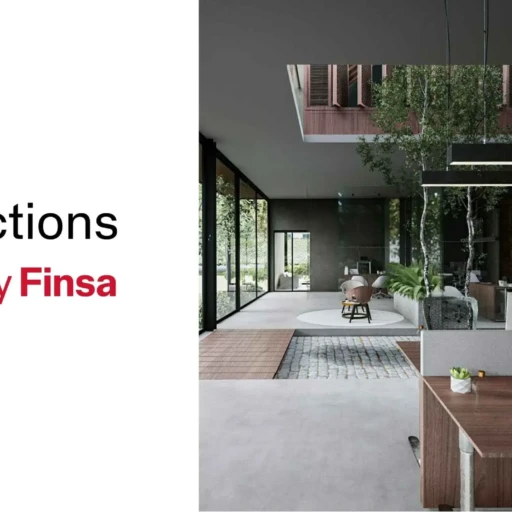When talking about inclusive interior design or the creation of accessible spaces through architecture, it is most common to think about the needs of people with reduced mobility. This is also what legislation contemplates: there should be ramps, elevators that accommodate a wheelchair, and adapted bathrooms. People with visual or hearing disabilities may also come to mind, but it is less common to remember another important group that could greatly benefit from a design that considers their differences in navigating the world: neurodivergent people.
According to Deloitte, between 10 and 20% of the world’s population is neurodivergent, meaning they process sensory information differently. Just as stairs pose an obstacle for someone who cannot walk, a space with numerous simultaneous stimuli (noise and lights, for example) can be overwhelming and paralyzing for the neurodivergent population.
What is neurodivergence?
According to Cleveland Clinic’s widely cited definition, neurodivergence is a non-medical term describing people whose brains develop or function differently. “This means they have different strengths and difficulties compared to those whose brains develop or function in a more neurotypical way,” they state. Neurodivergence includes conditions like autism, ADHD, and dyslexia, among others.
While each person and brain is different (hence the term neurodiversity), in many cases, neurodivergence manifests in how sensory stimuli are perceived and processed. A space designed without considering the sensory needs of this segment of the population can be genuinely uncomfortable and even incapacitating.
Why is it important to consider neurodivergence in architecture and interior design?
“A significant part of people perceives and processes sensory information differently. Ignoring this reality can result in creating environments that are not only non-inclusive but also potentially harmful to their well-being”, notes trends researcher Pepa Casado.
Ver esta publicación en Instagram
The needs of neurodivergent people are not as visible as those of someone with, for example, a physical disability, but they should not be overlooked in design. Fortunately, they are increasingly being considered. “The growing concern for mental and physical health drives designers and architects to create spaces that do not cause sensory overload or increase stress, especially for those with hypersensitivity to stimuli like light, noise, or textures”, says Casado. “Addressing the needs of neurodivergent people reflects a commitment to equity and social justice, besides allowing the creation of spaces that promote the well-being of all users”, she adds.
Just as a ramp or elevator does not make a space worse for those who do not need them, an environment designed with neurodivergence in mind will not bother neurotypical people either. In most cases, the result will be a kinder and more pleasant space overall. “In design and architecture, strategies are already being implemented to minimize the negative effects of bright light, noise, and other sensory overloads, based on neuroscience studies”, exemplifies the expert.
Characteristics of a space that includes neurodivergence
What is considered in inclusive designs that also think about the neurodivergent population? They must be spaces that integrate various sensory strategies to avoid overloads and promote well-being. Additionally, they should allow some flexibility to cater to the different needs of different people.
Sensory strategies to create inclusive interior design
Several elements can be considered to design an inclusive space:
- Lighting: It should be adjustable, preferably using natural light, as fluorescent or flickering lights can be very annoying for people with visual hypersensitivity, notes the researcher.
- Acoustics: “Materials that absorb sound, like acoustic panels or carpets, are recommended to reduce reverberation and noises that can distract or stress.”
- Colors: Too bright or saturated colors can be overwhelming, so palettes that generate calm and promote concentration are preferred.
- Textures and materials: They should be pleasant to the touch and not cause unwanted visual stimuli, such as reflections or glare.
- Rest areas or quiet spaces: Even considering all of the above, there may be times when some neurodivergent people become overloaded. For this reason, it is a good idea to include environments where people can retreat when they feel overwhelmed, which is especially relevant in work or educational spaces.
- Flexibility: Adding movable walls, adjustable furniture like elevating desks, adjustable seats, etc., as exemplified by the company Modulyss. Another tool that can be used is setting quiet time slots (with dimmer lights, no noise), something that some supermarkets have already incorporated.
- Biophilic design: Anyone with nearby plants (well-cared-for ones, as if they are sad, the effect will be different) knows they are a source of calm. This is something already proven by science, which is why biophilic design is so important. It incorporates both plants and other natural elements.
Ver esta publicación en Instagram
Examples of inclusive design with neurodivergence
“Inclusive design is on the rise, and attention to neurodivergence is an integral part of this trend”, says the expert. Evidence of this is that there are already many types of spaces designed or modified with neurodivergent people in mind.
Inclusive educational spaces
Education is one of the areas where the relationship between neurodivergent people and their environment started to be addressed earlier. A recent example is the Westmark Lower School in California, designed by the NBBJ studio to serve as a prototype on “how design can better support students with different learning styles”.
With a U-shaped layout, the school is organized around a courtyard with circular areas featuring gardens and seating zones. It includes strategies to minimize sound leakage from one classroom to another, natural materials that add visual warmth, plenty of natural light, soft colors, and adjustable lighting. Additionally, all classrooms are very close to the outdoors and nature.
Ver esta publicación en Instagram
Inclusive projects in the workplace
“Neurodiversity is a competitive advantage”, titled Harvard Business Review a few years ago. However, that advantage could be diluted if the office or work environment is not designed with a neuroinclusive approach.
The New York offices of DuoLingo (the language learning app) have already been designed with the different needs of their staff in mind. They offer various spaces and much flexibility to choose where and how to work each day: quiet and distraction-free zones, others with more energy and interaction, secluded corners with natural light, and plenty of indoor vegetation.
Ver esta publicación en Instagram
Tourism and neurodivergence
Traveling can be quite a challenge for neurodivergent people, as it involves exposure to stimuli over which they have little control. Fortunately, some places are already considering neurodivergent tourism. One example is the sensory maps available to visitors at museums like the British Museum or MoMA in New York. These maps indicate if the rooms have natural light or not, if they are usually crowded, if they are noisy or quiet, or if there are strong odors, for example. Hotels and airports have also started to include areas and information for neurodivergent people.
Ver esta publicación en Instagram


 RK Interiors • Renata Koglin (@rkinteriorsch)
RK Interiors • Renata Koglin (@rkinteriorsch)

